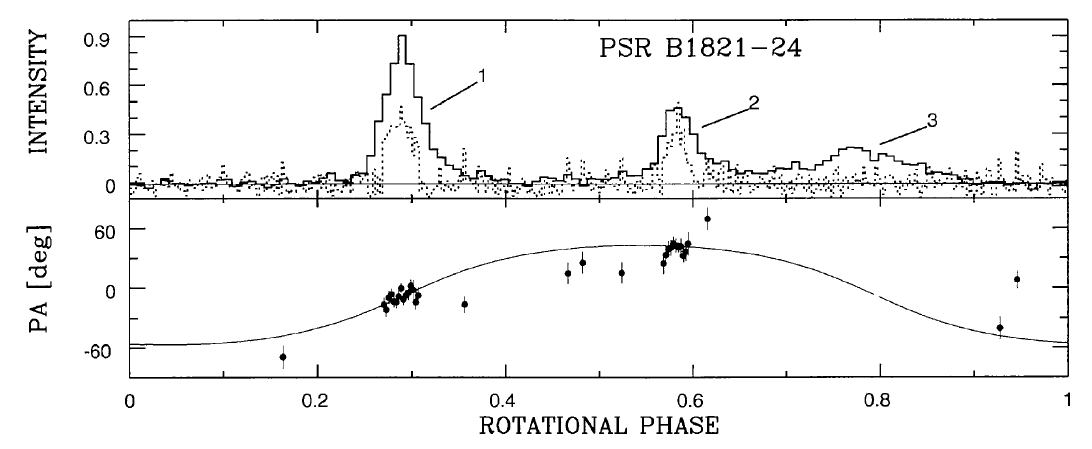Pulsars
Introduction
Radio pulsars are detected through regular, periodic "pulses" of radio
emission. Pulsars are actulaly rapidly spinning neutron stars.
A neutron star (NS) contains about as much material as the Sun, packed into a
ball 20-30 km across. As the NS rotates, beams of radiation sweep around
like light beams from a lighthouse. We see a pulse whenever the one of the
beams shines directly at us. Pulsars have spin periods from
several seconds (impressive enough) down to nearly 1 millisecond!

Polarization profile of millisecond-pulsar B1821-24 (spin period = 3.05ms)
(Backer & Sallmen, 1997, The Astronomical Journal, 114, 1539)
Research Projects
Dr. S. spent much of her graduate career trying to figure out what makes
pulsars shine. They pulse because they're spinning, but what is going
on to produce the beam? The polarization properties of millisecond
pulsars are an important clue, as is analyzing the pulse statistics and
pulse shape stability of these objects.
Determining that the Crab Pulsar's giant pulses occur
simultaneously at widely separated frequencies was a highlight.
Her Ph.D. thesis is
Millisecond Pulsars: Decoding Magnetospheres.
In addition, pulsars are extremely useful beasts. Pulsar timing can
tell us about planetary companions to pulsars. Binary pulsars can be
used to test predictions of Einstein's Theory of General Relativity, and a
Pulsar Timing Array could potentially detect Gravitational Waves.
Simple web searches can help you find more about all of these!
While at UW-L Dr. S. and undergraduate students reduced and analyzed 6 years of
archival radio pulsar data (from NRAO's
85-foot telescope
in Green Bank, WV) on the Vela pulsar to investigate the properties of the ISM
and the Vela Supernova Remnant.
Online Pulsar Introductions

